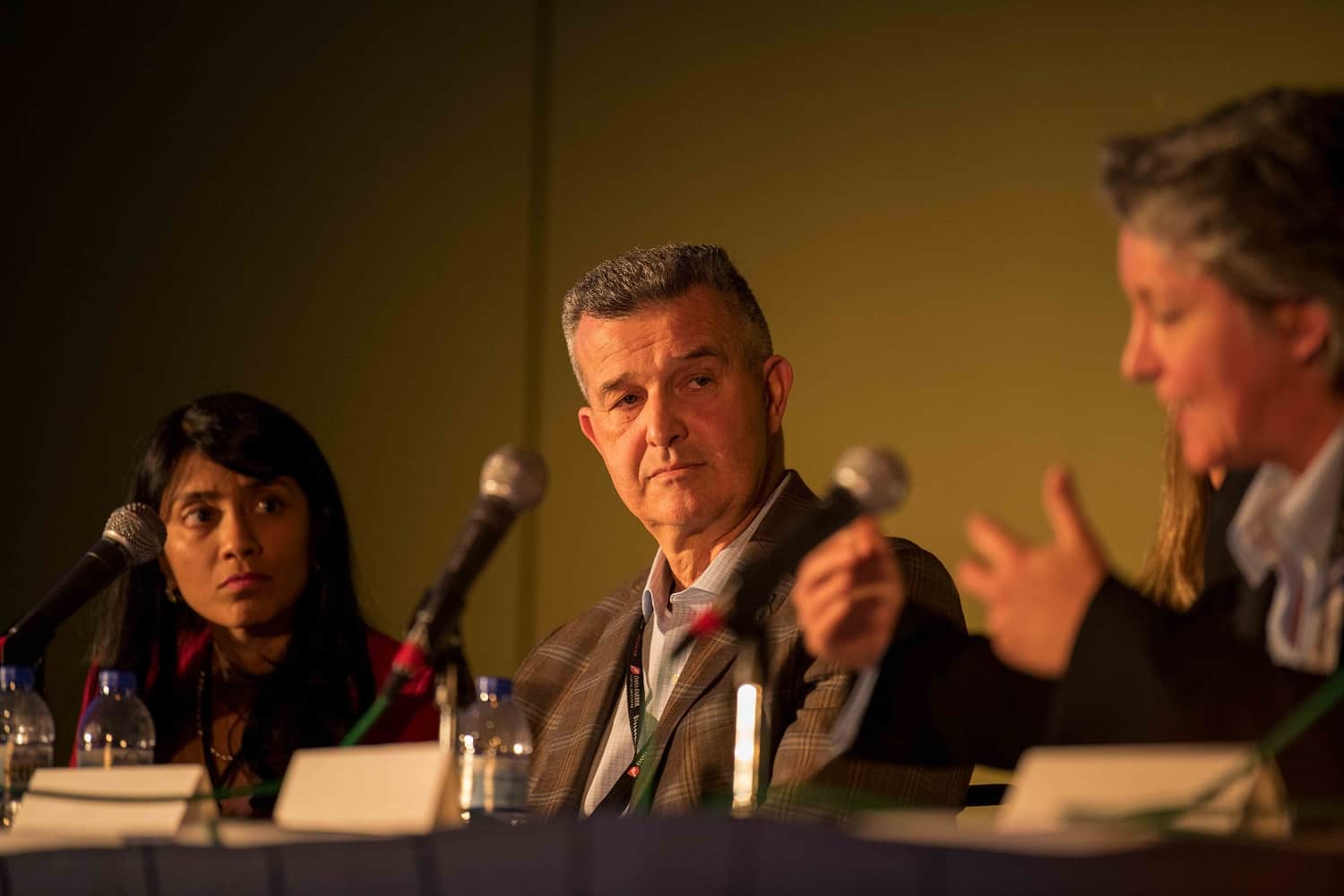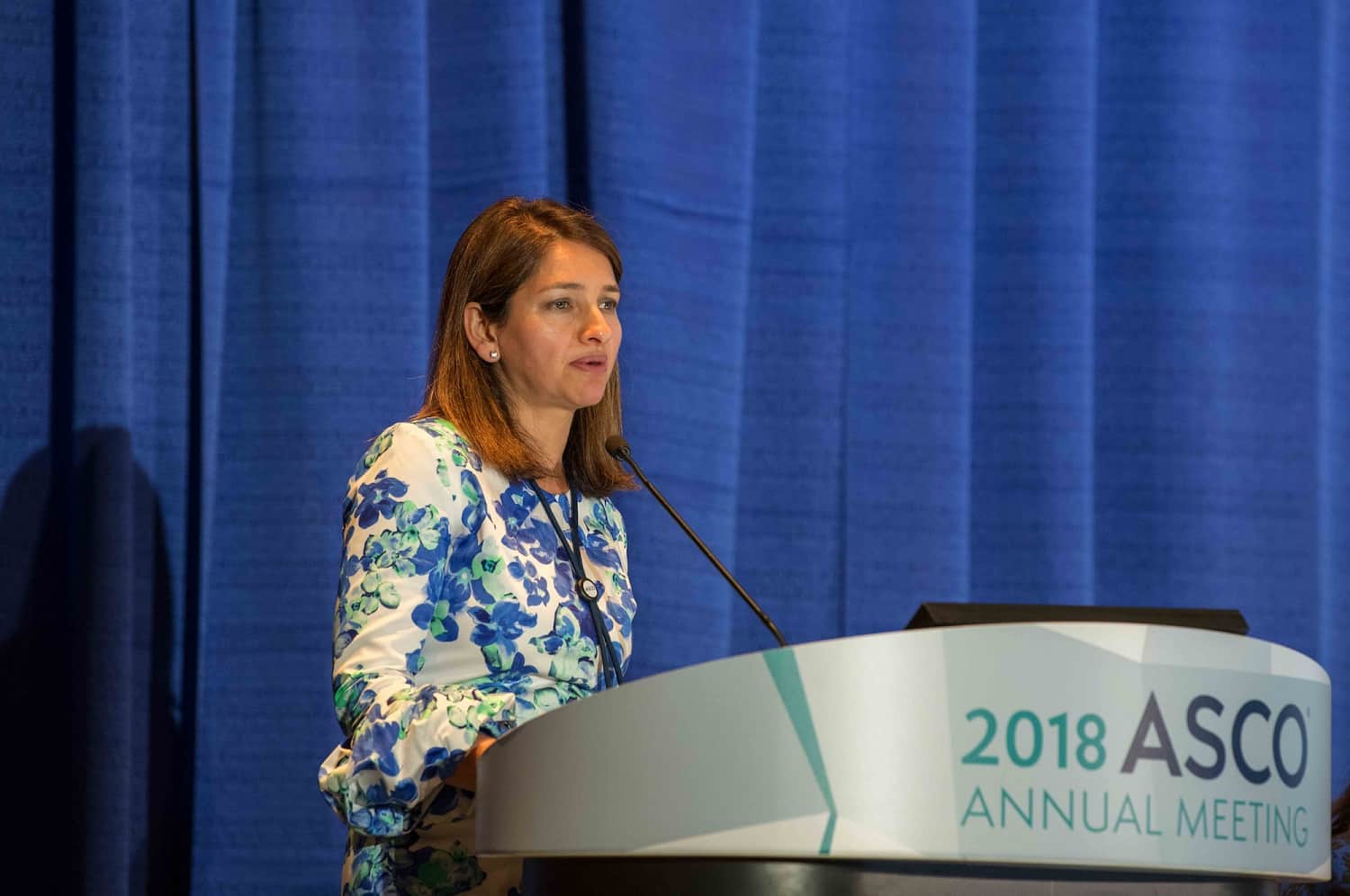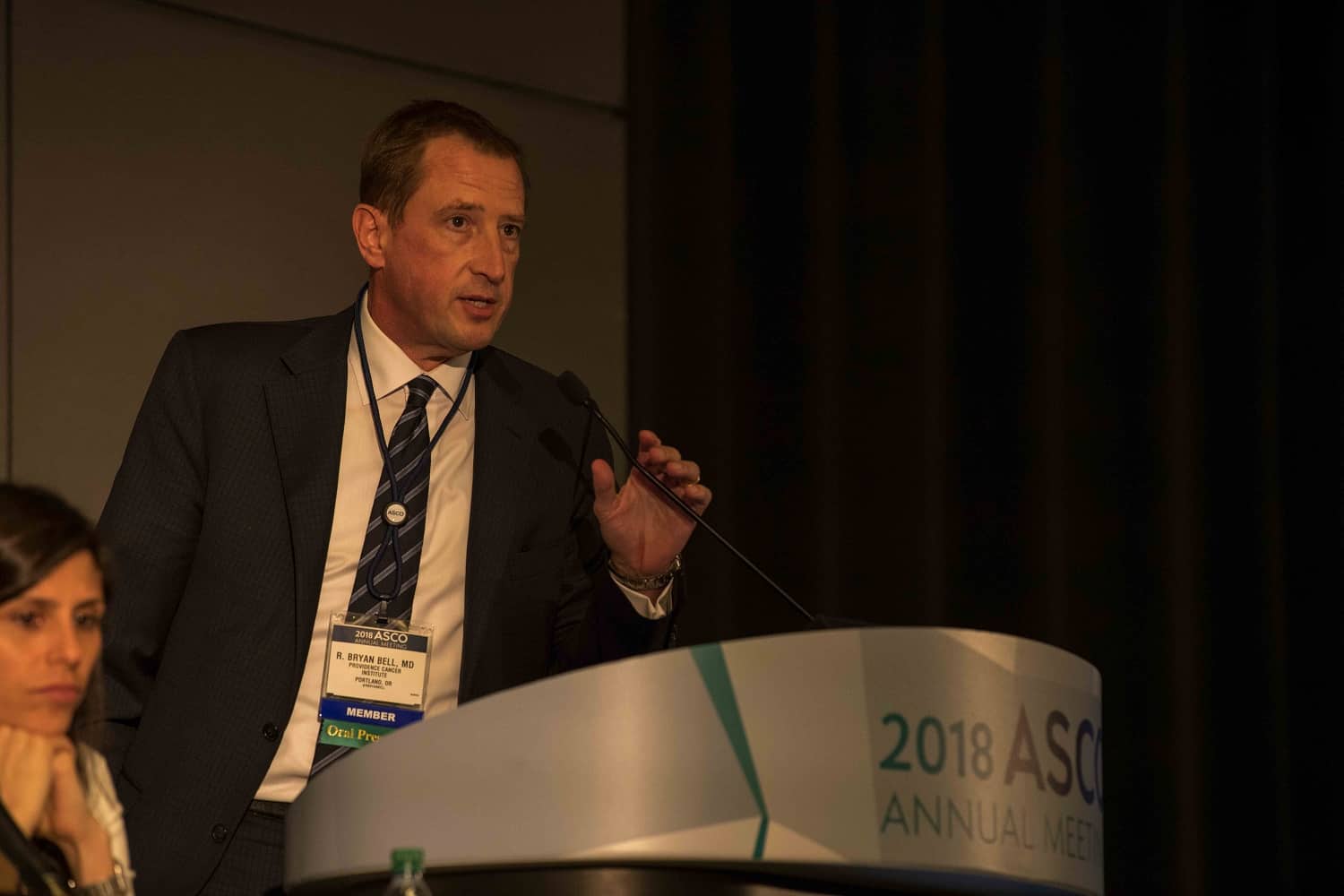“The need for treatment personalization is obvious as every cancer is molecularly unique.”
So began Wolfgang Wick, MD, of the University Clinic of Heidelberg, on Day 1 of ASCO18 during his talk about a personalized cancer vaccine for brain cancer patients. He touched on one of the most important challenges in cancer immunotherapy: since each patient’s tumor has different genetics, how can we develop strategies that are effective not only for individuals, but also for larger patient populations?

The vaccine approach explored by Wick’s team—which includes Hideho Okada, MD, PhD, a Cancer Research Institute (CRI) Clinical Team Leader at the University of California, San Francisco—is known as GAPVAC and uses a particularly elegant strategy for patients with newly diagnosed glioblastoma (GBM). Although no two GBM tumors are the same, they do have similarities since they arise from the same types of brain cells. To take advantage of this fact, the first step of the vaccine regimen—GAPVAC1—aims to teach a patient’s immune system to recognize small bits of protein, called peptides, commonly found on GBM. GAPVAC1 was administered along with two compounds that stimulate the immune system—GM-CSF and poly-ICLC—at the same time as patients began adjuvant chemotherapy.
Impressively, of the 13 patients who completed the GAPVAC1 regimen, 92% generated immune responses against MHC class I-associated peptides and 69% against class II-associated peptides. Additionally, because GAPVAC1 consisted of peptides shared by many patients’ GBM cells, Wick’s team was able to manufacture the vaccine components in advance, thus allowing the patients to start receiving GAPVAC1 while Wick’s team created a second, more personalized vaccine matched to an individual patient’s tumor “fingerprint.”
The personalized peptide vaccine, GAPVAC2, is designed to stimulate patients’ immune systems against their own tumor’s unique mutations. These mutations produce molecules called neoantigens that are specific to the patient’s tumor and can be recognized as a target by the immune system. Since these targets are largely unique to individual patients, this second vaccine has to be designed individually for each patient. Of the 10 patients who completed the GAPVAC2 regimen, 80% had an immune responses against the target neoantigens. Altogether, the median overall survival of the 15 patients who received at least the first vaccine dose was 29 months, whereas the median progression-free survival was 14.2 months.
Later in the same session, David Reardon, MD, of the Dana-Farber Cancer Institute, and Amy Heimberger, MD, of the University of Texas MD Anderson Cancer Center, spoke about strategies to treat recurrent glioblastoma with pembrolizumab, an anti-PD-1 checkpoint immunotherapy. Reardon’s study combined pembrolizumab with bevacizumab, an antibody that targets the VEGF pathway and is the standard of care for glioblastoma, whereas Heimberger’s approach treated patients with pembrolizumab both prior to and after surgery.

The combination of pembrolizumab and bevacizumab led to a progression-free survival rate of 26% at six months, about the same as the historical rate associated with bevacizumab alone. During the subsequent discussion session, Reardon alluded to the possibility that the dosage of bevacizumab—given that it targets tumor blood vessels—could be negatively impacting the tumor-fighting ability of T cells by making it harder for them to traffic into tumors or else by limiting the resources available to them in the tumor microenvironment. To that end, Reardon pointed to multiple ongoing studies that are evaluating PD-1 checkpoint immunotherapy in combination with bevacizumab at lower doses, which aim to address its potentially negative impact on immune cells while also retaining its antitumor activity.
In Heimberger’s study, administering pembrolizumab as a monotherapy prior to surgery helped, as it more than doubled the six-month progression-free survival rate (53%) and led to an estimated 72% overall survival rate at one year. However, Heimberger’s team—which included James P. Allison, PhD, and Padmanee Sharma, MD, PhD, also of MD Anderson—observed a lack of T cells within the glioblastoma tumors that likely limited the response rate. In answer to a question during the discussion session, Heimberger speculated that steroids could be responsible for suppressing anti-cancer immune activity, but also noted that there are many other immunosuppressive factors often present that could be holding T cells back, and stressed the need for strategies that can recruit new “fresh” T cells into these tumors.
CAR T cell therapy, which involves genetically re-engineering a patients’ own immune cells, represents another promising personalized immunotherapy approach. While CAR T cells have thus far been approved only for leukemia and lymphoma, on Day 1, Noopur Raje, MD, of Massachusetts General Hospital, focused on using these “living drugs” to help patients with relapsed or refractory multiple myeloma. Unlike CD-19-targeted CAR T cell therapies approved for treatment of leukemia and lymphoma, bb2121 targets the B-cell maturation antigen, or BCMA.

Of the nineteen patients who were treated with 450 million anti-BCMA CAR T cells, all but one responded, and half of these patients (9) had complete responses. Overall, 81% of the patients were still alive at the six-month mark, and 71% at the nine-month mark. As with other CAR T cell immunotherapies, the treatment resulted in a side effect called cytokine release syndrome (CRS) in some patients, most instances of which were mild. The two most severe cases were successfully managed within a day with additional treatment.
Finally, R. Bryan Bell, MD, D.D.S., of the Providence Cancer Institute, gave a talk on an approach that targets—and seeks to activate—the novel OX40 immune checkpoint, which is a member of the tumor necrosis factor (TNF) receptor superfamily. Specifically, he showcased the promising activity of MEDI6469, an OX40 agonist, prior to surgery in patients with head and neck squamous cell carcinoma. In four of the patients treated so far, increased T cell activation and proliferation were observed after treatment (and before surgery). All four patients remain free of disease. Additionally, this OX40 treatment did not cause any delays in surgery for patients, nor did it cause any surgical complications.

After highlighting the promising immune activity associated with activation of the OX40 immune checkpoint, which hopefully will ultimately result in improved survival for patients, Bell stressed the potential promise of combining this approach with other immunotherapies, including other checkpoint inhibitors and adoptive cell therapy, to even further enhance anti-cancer immune responses.
Come back to our blog for tomorrow’s recap of Day 2 at ASCO18.

